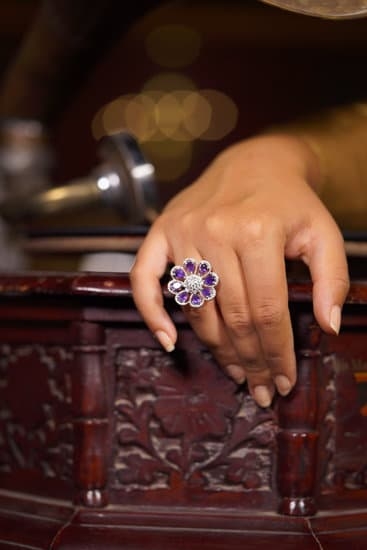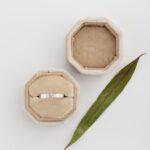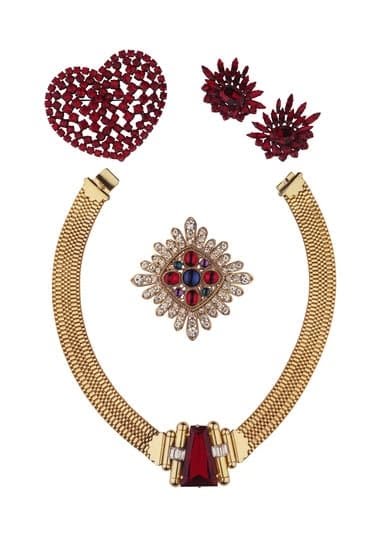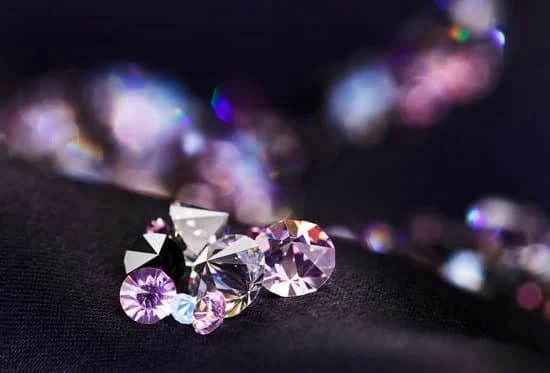A DIY clay jewelry dish is a fun and creative project that allows you to make your own personalized dish for storing and displaying your jewelry. It’s a must-have for any jewelry collection, as it not only adds a unique touch to your accessories but also serves as a practical storage solution.
By making your own clay jewelry dish, you have the opportunity to showcase your style and personality through the design and colors you choose. Whether you prefer a minimalistic and sleek look or want to add vibrant patterns and textures, the possibilities are endless.
Not only is making a DIY clay jewelry dish a great way to express your creativity, but it can also be a therapeutic activity. Working with clay allows you to relax, focus on the present moment, and let your imagination run wild. The satisfaction of creating something beautiful and functional with your own hands is truly fulfilling.
In this article, we will guide you through every step of the process, from gathering the necessary materials to baking and finishing your clay dish. We’ll share tips and techniques for adding texture, design elements, and personal touches. We’ll also provide ideas on how to use and display your finished piece in organizing your jewelry collection or gifting it to someone special. So get ready to channel your creativity and embark on this exciting DIY project.
Materials Needed
To create a DIY clay jewelry dish, you will need various materials and supplies. Here is a detailed list of everything you will need:
Clay
Choose a clay that is suitable for jewelry making, such as polymer clay or air-dry clay. Polymer clay comes in a variety of colors and can be baked in an oven for durability. Air-dry clay does not require baking but may take longer to fully harden.
Rolling Pin
A rolling pin is essential for flattening the clay and creating an even surface. Look for a small-sized rolling pin that is easy to handle and maneuver.
Clay Tools
Invest in a set of clay tools that includes items like sculpting knives, shaping tools, and texture tools. These tools will help you shape the clay into your desired design and add intricate details.
Paint
Choose paints specifically designed for use on clay. Acrylic paints are a popular choice as they provide vibrant colors and are readily available. Consider using metallic or pearlescent paints for a touch of glamour.
Optional Embellishments
If you want to add some extra sparkle or flair to your jewelry dish, consider using optional embellishments such as glitter or beads. These can be added during the shaping process or glued on after the dish has been baked and painted.
Before starting your project, it’s important to make sure you have all these materials on hand. This will ensure a smooth workflow and prevent any interruptions during the creation process. Additionally, gather other necessary items such as parchment paper or a non-stick mat to protect your work surface and prevent sticking.
Creating your own DIY clay jewelry dish allows you to customize every aspect according to your personal style preferences. Now that you have all the necessary supplies ready, let’s move on to preparing your workspace before diving into the project.
Preparation
Before diving into the exciting process of making a DIY clay jewelry dish, it’s important to properly prepare your workspace and gather all the necessary materials. By doing so, you can ensure a smooth and enjoyable crafting experience. Here are some step-by-step instructions on how to prepare your workspace and gather everything you need before getting started.
- Find a suitable work surface: Choose a clean, flat surface that provides enough space for you to comfortably work with the clay. It could be a countertop, table, or any other stable surface that won’t be damaged by clay residue or potential spills.
- Protect your work surface: Use a disposable tablecloth, wax paper, or a silicone baking mat to cover your work surface. This will protect it from any stray bits of clay or paint that may stain or damage the surface.
- Gather your materials: Refer to the “Materials Needed” section of this article and make sure you have everything at hand before starting the project. You will need clay (preferably oven-bake), a rolling pin, clay tools (for shaping and smoothing), paint (if desired), optional embellishments like glitter or beads, and any other materials mentioned in the list.
- Get organized: Have containers or bowls ready to hold your supplies while you work. This will help keep everything organized and within reach as you progress through each step of making the jewelry dish.
- Prepare water and cleaning supplies: Keep a small bowl of water nearby for wetting your hands or tools as needed during the clay molding process. Additionally, have paper towels or damp cloths handy for cleaning up messes quickly and easily.
By following these steps in preparation for creating your DIY clay jewelry dish, you will set yourself up for success from the start. Having an organized workspace and all the necessary materials within reach will make the crafting process more enjoyable and efficient. Now that you’re prepared, let’s move on to the next step: creating the dish base.
Creating the Dish Base
Once you have gathered all the necessary materials and prepared your workspace, you are ready to start creating the base of your DIY clay jewelry dish. The dish base is the foundation upon which you will build your personalized design, so it is important to take your time and ensure that it is shaped properly. There are several techniques you can use to shape the clay into a dish form, including hand molding and using a mold.
Hand molding is one of the most common and versatile techniques for creating a clay dish base. Start by taking a piece of clay and kneading it in your hands until it becomes soft and pliable. Then, flatten the clay into a disc shape using a rolling pin or by pressing down with your palms. Gradually increase the pressure as you work towards the edges to create a raised lip for the dish.
Alternatively, if you prefer a more uniform and precise shape for your clay dish, you can use a mold. There are many types of molds available specifically designed for making jewelry dishes, ranging from simple geometric shapes to intricate designs.
To use a mold, simply press the clay into the mold cavity, making sure to distribute it evenly and remove any air bubbles. Once the clay is fully pressed into the mold, carefully remove it by gently flexing or tapping on the back of the mold.
No matter which technique you choose, make sure to smooth out any imperfections or seams on the surface of your clay dish base using your fingers or a smoothing tool. This will ensure that your finished jewelry dish has a clean and polished appearance. Remember to follow any additional instructions specific to your chosen type of clay, such as proper drying time before proceeding to further steps.
| Technique | Procedure |
|---|---|
| Hand Molding | – Knead the clay until soft and pliable \n – Flatten the clay into a disc shape \n – Gradually increase pressure towards the edges to create a raised lip |
| Using a Mold | – Press clay evenly into the mold cavity \n – Remove any air bubbles \n – Carefully remove the clay from the mold |
Whichever technique you choose, ensure that your clay dish base has a smooth surface by using your fingers or a smoothing tool. It is important to follow specific instructions for drying time as per your chosen type of clay to avoid any damage. Once you have created the base, you can move on to adding texture and design elements in order to personalize your DIY clay jewelry dish further.
Adding Texture and Design
Once you have shaped the clay into a dish form, it’s time to add some texture and design elements to make it truly unique. This is where you can let your creativity shine and give your DIY clay jewelry dish a personalized touch. Here are some tips and techniques on how to add texture and design:
- Using Stamps: One way to add interesting textures to your clay dish is by using stamps. You can use rubber stamps or even everyday objects like buttons or textured fabrics. Gently press the stamp onto the clay surface to create imprints. Experiment with different designs and patterns to find one that suits your style.
- Carving Tools: Carving tools are great for adding intricate details and designs onto the clay dish. With a carving tool, gently carve lines, shapes, or even words into the surface of the clay. Take your time and be careful not to press too hard as you don’t want to accidentally break or damage the dish.
- Creating Patterns with a Toothpick: If you prefer a more free-form approach, using a toothpick is an excellent technique for creating unique patterns on your clay dish. Simply drag the toothpick across the surface of the clay in any pattern or direction you desire. You can create swirls, dots, or abstract designs depending on your artistic vision.
Remember that each texture or design element will add character to your DIY clay jewelry dish. Don’t be afraid to experiment and try different techniques until you achieve the desired effect.
It’s important to note that if you plan on painting your clay dish after baking it, consider adding textures sparingly as they may become less noticeable or smooth out during the painting process.
Common Mistakes to Avoid
While adding texture and design to your clay dish, there are a few common mistakes that you should be aware of and try to avoid. These include:
- Pressing too hard: It’s easy to get carried away with adding texture and pressing too hard on the clay surface. This can cause the clay to deform or even crack. Remember to apply gentle pressure and let the tools do the work.
- Choosing inappropriate stamps or tools: Not all stamps or carving tools are suitable for working with clay. Avoid using sharp objects that may damage or tear the clay. Also, make sure that your chosen stamps have a clean and clear design that will transfer well onto the clay surface.
- Overdoing it: It can be tempting to add many different textures and designs to your dish, but it’s best to keep it simple and not overcrowd the surface. Choose a few key elements or a cohesive theme for your design to create a visually appealing result.
By being mindful of these mistakes, you can ensure that your DIY clay jewelry dish turns out beautifully textured and designed, adding an extra touch of flair to your jewelry collection.
Baking and Finishing
Once you have shaped your clay dish and added all the desired texture and design elements, it’s time to move on to the baking and finishing stage. Baking the clay is essential to ensure that it becomes durable and long-lasting. Here is a thorough explanation of the baking process, including temperature and time guidelines.
- Preparing for Baking: Before you place your clay dish in the oven, make sure to clean any dirt or debris from its surface. You can use a soft brush or cloth to gently remove any particles that may have accumulated during the crafting process. It’s also important to double-check that your oven is clean, ensuring there are no food residues or other contaminants that could affect the appearance or quality of your clay dish.
- Temperature Guidelines: Different types of clay require different baking temperatures, so it’s crucial to read and follow the manufacturer’s instructions or guidelines for your specific brand of clay. Generally, polymer clays are baked at temperatures ranging from 235°F (113°C) to 275°F (135°C).
Setting your oven at too high a temperature may cause the clay to burn or darken, while baking at too low a temperature may result in weak or brittle finished pieces. - Time Guidelines: The baking time will depend on the thickness of your clay dish. Thicker pieces generally require longer baking times than thinner ones. As a general rule of thumb, you should bake your clay dish for about 15 minutes per ¼ inch (6mm) of thickness. For example, if your dish is ½ inch (12mm) thick, it should be baked for approximately 30 minutes.
- Monitoring the Baking Process: While your clay dish is in the oven, keep an eye on it to ensure it doesn’t overbake or become damaged. Avoid opening the oven door during baking unless necessary since sudden temperature changes can lead to cracking or uneven curing. If you notice any unusual discoloration or an unpleasant odor coming from the oven, immediately remove your clay dish and allow it to cool before handling.
- Finishing Techniques: Once your clay dish has finished baking and has cooled completely, you can proceed with adding the finishing touches. Consider sanding the edges of the dish with fine-grit sandpaper to smooth out any rough spots. This will not only improve its appearance but also make it more comfortable to handle.
You may also choose to add a glossy sealant or varnish to give your clay dish a polished and professional look. Select a sealant appropriate for your type of clay, and apply it according to the manufacturer’s instructions.
By following these steps, you can ensure that your DIY clay jewelry dish is properly baked and finished, resulting in a beautiful and durable piece that will safely hold your cherished jewelry for years to come.
Painting and Decorating
Once you have created the base of your DIY clay jewelry dish and it has been baked and finished, it’s time to move on to the fun part – painting and decorating. This step allows you to unleash your creativity and add a personal touch to your dish with various colors and designs. Here are step-by-step instructions on how to paint the clay dish for a beautiful and unique result:
- Gather Your Painting Supplies: Before you begin, make sure you have all the necessary painting supplies. This includes acrylic paints in your desired colors, paintbrushes in different sizes, water for rinsing brushes, a palette or disposable plate for mixing colors, and paper towels for any messes.
- Prepare Your Workspace: Lay down some newspaper or a drop cloth to protect your work surface from any paint spills or splatters. Make sure you have good lighting so you can see the details as you paint.
- Choose Your Design: Think about the style or theme you want for your jewelry dish. You can go for a simple solid color, create patterns using stencils or stamps, or even try more advanced techniques like watercolor effects or acrylic pouring. Consider coordinating your design with the color scheme of your room or matching it to your favorite jewelry pieces.
- Apply Base Coats (If Needed): Depending on the type of clay used and desired effect, you may need to apply a base coat of paint before adding detailed designs. This is especially important if working with darker colored clay as it may affect the final look of lighter paint colors.
- Add Details: Once your base coats are complete, it’s time to add any additional designs or details. You can use smaller brushes or even toothpicks to create intricate patterns, dots, or lines. Experiment with different techniques and colors to achieve the desired effect.
- Let It Dry: After you have finished painting and decorating your clay dish, allow it to dry completely before handling or applying any sealants. This will ensure that the paint sets properly and doesn’t smudge or react with the sealant.
5. Paint Away. Start by applying thin coats of paint onto the surface of the clay dish using a brush that matches the size of the area you are painting. Work in one direction to ensure smooth coverage without streaks. Allow each coat to dry completely before applying additional layers.
Remember, painting your DIY clay jewelry dish is an opportunity to let your creativity shine. Don’t be afraid to try new techniques or experiment with different colors and designs. The end result will be a one-of-a-kind piece that you can proudly display while showcasing your jewelry collection.
- Gather Your Painting Supplies
- Prepare Your Workspace
- Choose Your Design
- Apply Base Coats (If Needed)
- Paint Away.
- Add Details
- Let It Dry
Organizing and Display
Once you’ve completed your DIY clay jewelry dish, you’ll need some creative ideas on how to utilize and display this beautiful piece. There are numerous ways to incorporate it into your daily life while adding a touch of personalization and charm. One popular option is to showcase your clay dish on a vanity or nightstand. This allows you to easily access your favorite jewelry pieces while also adding an aesthetically pleasing element to your space.
Another practical use for your DIY clay jewelry dish is for jewelry storage and organization. The dish provides a designated spot to keep your rings, earrings, bracelets, and other small accessories in one place. You can arrange different sections of the dish for specific types of jewelry or use it as a catch-all dish for everyday wear items.
If you’re looking to spread the joy of handmade creations, consider gifting your DIY clay jewelry dish to a loved one. It makes for a thoughtful and personalized present that they can cherish for years to come. You can further customize the gift by selecting their favorite colors or incorporating special design elements that hold significance.
Remember, the possibilities are endless when it comes to organizing and displaying your DIY clay jewelry dish. Get creative and think outside the box – use it as a decorative piece in a bookshelf display, place small trinkets or keepsakes inside it, or even repurpose it as a key holder by adding small hooks on the edge. Experiment with different placement options until you find the perfect way to showcase this unique handmade treasure.
Troubleshooting and Tips
Common issues can arise during the DIY process of making a clay jewelry dish, but with a few helpful tips and tricks, you can easily overcome them. One common problem is cracks forming in the clay while shaping or baking.
To fix cracks, you can gently smooth the edges with your fingers or use a small amount of water to blend them together. If the cracks are larger, consider adding a small piece of fresh clay to fill in the gap and then blend it seamlessly into the rest of the dish.
Another issue that may occur is achieving a smooth surface on your clay jewelry dish. Uneven surfaces or fingerprints can detract from the overall appearance. To avoid this, make sure to clean your hands thoroughly before handling the clay and use a gentle touch when shaping it. If you notice any imperfections on the surface, lightly sand them with fine-grit sandpaper until they become smooth.
Additionally, air bubbles can sometimes form inside the clay during the baking process, resulting in unsightly holes or bumps. To prevent air bubbles, knead and condition your clay properly before starting to work with it and make sure there are no trapped pockets of air within it. If you do encounter air bubbles while baking, gently prick them with a needle or toothpick while the clay is still soft so they have time to close up without leaving unwanted marks.
Lastly, if you’re looking for a glossy finish on your jewelry dish but find that your chosen sealant isn’t giving you the desired effect, consider using resin instead. Resin creates a beautiful glossy finish and adds an extra layer of durability to your clay dish. However, be sure to follow resin application instructions carefully as it requires additional curing time.
By troubleshooting these common issues and incorporating these helpful tips into your DIY process, you’ll be able to create a stunning and flawless clay jewelry dish that will be both functional and aesthetically pleasing for years to come. Remember that practice makes perfect, so don’t be discouraged if your first attempt isn’t perfect – keep experimenting and refining your skills to achieve the desired results.
Enjoy the creative journey and revel in the satisfaction of crafting a unique piece for yourself or to gift to someone special.
Conclusion
In conclusion, crafting your own DIY clay jewelry dish is a fun and rewarding project that allows you to create something beautiful and functional with your own hands. Throughout this article, we have explored the materials needed, preparation process, creation techniques, and finishing touches involved in making a clay jewelry dish.
By following the step-by-step instructions provided, you will be able to shape the clay into a stylish dish form and add texture and design elements to give it a personalized touch. The baking process ensures that your clay dish becomes durable and long-lasting, while painting and decorating allows you to unleash your creativity and create a unique piece of art.
Not only can these DIY clay jewelry dishes be utilized for storing and organizing your precious jewelry collection, but they also make great gifts for loved ones. Imagine the joy on someone’s face when they receive a handcrafted jewelry dish made with love. So why not give it a try? You don’t need to be an experienced crafter to embark on this project; with a little patience and practice, anyone can create their very own clay jewelry dish.
As you embark on this creative journey, remember that troubleshooting is part of the process. Don’t get discouraged if you encounter challenges along the way. There are useful tips available for fixing cracks in the clay or achieving a smooth surface. Embrace the opportunity to learn from your mistakes and improve your skills.
Frequently Asked Questions
How do you make a clay jewelry dish?
To make a clay jewelry dish, you will need a few basic materials and follow several steps. First, choose the type of clay suitable for pottery projects and gather other supplies like rolling pin, clay cutting tools, acrylic paint (optional), and a kiln or oven. Begin by conditioning the clay to make it pliable and remove any air bubbles. Then roll out the clay to the desired thickness and use the clay cutting tools to shape it into a dish form.
You can add textures or patterns if desired. Smooth any rough edges using water or a soft brush dipped in water. At this stage, you can also add decorative elements or imprints if desired. Let the dish dry thoroughly before either firing it in a kiln (for certain types of clay) as per the manufacturer’s instructions or baking it in an oven according to the temperature guidelines provided for your specific clay type.
What kind of clay do you use for a trinket dish?
When choosing what kind of clay to use for a trinket dish, there are several options available depending on your preferences and intended use of the dish. Polymer clays like Sculpey or Fimo are commonly used for small crafts due to their flexibility, ease of use, and availability in various colors. Polymer clays do not require firing as they harden when baked in an oven at low temperatures which makes them convenient for DIY projects at home.
Air-dry clays like Crayola Air-Dry Clay are another option that does not require baking or firing and simply hardens when left exposed to air over time. If you prefer traditional pottery methods, earthenware or stoneware clays fired in a kiln can also be used for trinket dishes, giving your project more durability and artistic potential.
What is the best clay for ring dishes?
The best type of clay for making ring dishes largely depends on personal preferences regarding aesthetics, functionality, and ease of use during creation. Porcelain is commonly favored for its delicate appearance, smoothness, and ability to showcase intricate details. Porcelain can be fired at high temperatures, resulting in a durable and elegant ring dish.
Stoneware clay is another excellent option as it is known for its durability, making the dish less prone to chipping or cracking under regular use. Stoneware also offers a range of glazing possibilities that can enhance the visual appeal of your ring dish. Ultimately, the best clay for ring dishes will vary based on individual preferences and artistic goals, so exploring different clay types and experimenting with various techniques will help you find the perfect fit for your project.

Welcome to my jewelry blog! My name is Sarah and I am the owner of this blog.
I love making jewelry and sharing my creations with others.
So whether you’re someone who loves wearing jewelry yourself or simply enjoys learning about it, be sure to check out my blog for insightful posts on everything related to this exciting topic!





